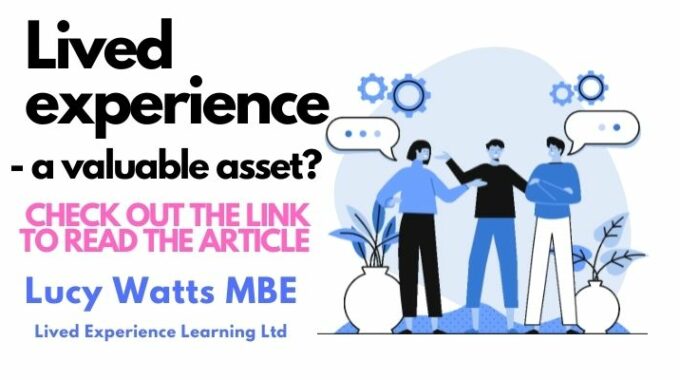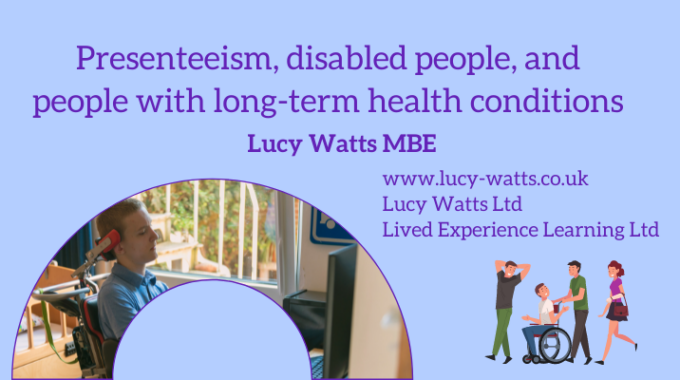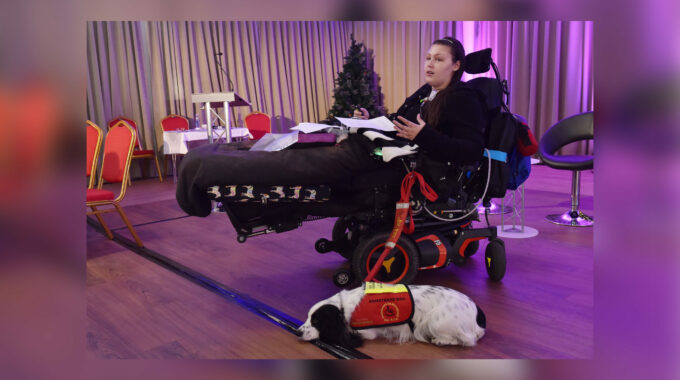What if we viewed lived experience as an asset? As an asset of professional, economic,…
Home Artificial Nutrition Week 2016
Most people have heard of feeding tubes, seeing kids with cancer and other illnesses with a NasoGastric Tube taped to their face. People know it’s possible to be fed through a tube in your nose down into your stomach. However, how many people know you can be fed into the small bowel? Even more so, how many people know you can be fed directly into the bloodstream? Not many. I certainly didn’t know you could be fed into the bloodstream until TPN was urgent and I would die imminently if I wasn’t started on it. It’s Home Artificial Nutrition Week, and so in this post I want to raise awareness of the different types of feeding, to show that a feeding tube is not the end of the world and that we can live full lives in spite of them, but also to raise awareness of the issues surrounding tube feeding.
I was first put on tube feeds via a NasoGastric Tube in August 2009 at the age of 15. I was unable to swallow, digest or absorb food and so they started me on NG feeds after losing 6 stones in 6 months and only being able to eat one small handful of pieces of carrot cooked to the point of them being devoid of all nutrition each day. I was assured by a paediatrician this was a normal diet for a 15 year old, and his reluctance to accept that this was not a psychological issue delayed support; I only received my NG because I passed a psychiatric evaluation. However, only a week on NG feeds I was discharged home, on a bank holiday weekend, mum having only been shown once how to set up my feed and care for my NG and we were sent home with a pump but no stand or drip pole or rucksack to put it in, leading to us improvising with an umbrella stand, the handle of a broom and a coat hanger on the curtain pole, and no support or rapid access back to the ward in case of difficulty. We were thrown in at the deep end with no support.
Three months later, on the advice of a rheumatologist who photocopied text about Ehlers-Danlos Syndrome causing gut problems out of a medical textbook and put them in my notes, a PEG was placed on the 21st October 2009. I struggled on with PEG feeds from 2009-January 2011, continuously losing weight in that time where I couldn’t tolerate, digest or absorb my feeds, despite going through almost the full range of feeds, different calorie per ml ratios along with copious amounts of polycal and awful shots of calogen which my gut was not happy about at all. We kept pushing and pushing my gut to work, but it only got worse. I was admitted to hospital weighing eight and a half stone in January 2011, and put on PEG/J feeds, feeding directly into the small bowel via a tube that was passed through the PEG into my stomach and threaded down into the small bowel using an endoscope. However, I did not tolerate this method of feeding either. I continued to lose weight, until I dropped to the weight of 7 stone, which is dangerous for someone of 6’1. I had lost 11.5 stones in two years. Not only was I dangerously underweight, I had a heart attack-like episode caused by my body beginning to digest my heart muscle, I had no muscle or fat on my body, my bone marrow was starting to fail, I had blood transfusions and iron infusions and was extremely poorly. It took my hospice nurse, who came on board two weeks earlier, begging my London specialists to admit me before I finally received the nutrition I needed.
I was placed on TPN on Friday 13th May 2011, and my consultants didn’t know if I’d survive, if my body would tolerate the nutrition and pulled my mum aside to tell her this. Fortunately for us, with careful management and replacement vitamins for imbalances caused by the refeeding process, I tolerated the feed and it keeps me alive to this day. I was in hospital for five weeks whilst they got my TPN prescription right – each patient has a tailor-made feed prescription made to their exact requirements based on blood tests, and their feed is made up to this prescription so they get exactly what they need. I also had to wait for the local CCG to agree funding, which took a while, as well as to organise with the homecare company for the delivery of the medical fridge, supplies and equipment necessary for me to come home on TPN, as well as nurses to come in and train mum on setting up and disconnecting my TPN feeds. Five weeks on a ward with no TV, no phone signal, no internet, and on a ward with 5 dementia patients; it was a long an arduous admission. I’d also only recently transitioned into adult services, and mum was not able to stay with me like she did in paediatrics so I was making life or death decisions on my own for the very first time. It was a difficult time.
TPN is a mixture of sterile nutrients in fluid, made up of glucose, amino acids, electrolytes, vitamins, minerals and trace elements, and on some days lipids (fats), which is slowly pumped into the bloodstream through a central line which gives access directly into the bloodstream and sits just inside the heart, or in a large (central) vein leading to the heart. These central lines come in different forms, including:
- A Hickman Line, which exits the body on the chest, enters the bloodstream in a vein in the neck and is threaded down into the heart (there are other brands similar to the Hickman);
- A PICC line, which exits the body on the arm and is threaded through a large vein into the heart. PICCs tends to be used shorter term than a Hickman as the PICC lines don’t last as long;
- A Port-a-Cath, which sits in a large vein, somewhere on the torso, and has a reservoir that sits under the skin. This reservoir is accessed with a needle, so an infusion can be run into the bloodstream, but has the benefit that when not connected to an infusion, you can de-access the reservoir (remove the needle) and have no external line to worry about. Active people seem to favour this option as they can be fit and active, go swimming, do sports etc. with no external line or attachment to consider.
 |
| My first Hickman Line, single lumen |
I have a permanent Hickman line in my chest through which my TPN is pumped in over 21 hours every day. Some people only need their TPN over 10-12 hours, and some only need it 3-5 times a week as they can tolerate days off their feed. Unfortunately I cannot cope with longer than 3 hours off my TPN as my blood sugar drops and my body doesn’t hold onto fluid so I become dehydrated very quickly. I don’t mind being hooked up most of the time, as I stick the TPN in its special rucksack, pop it on the back of my wheelchair and go out and walk Molly or go to charity events, to meetings, give speeches, and go out generally to run errands, meet friends or family and anything else I want or need to do. I also, every day, have an extra bag of fluid, called Hartmann’s Solution, to top-up the TPN to meet my fluid requirements. My TPN contains 4 litres of fluid, pumped in over 21 hours, and I have 1 litre of Hartmann’s every day which I fit around what I am doing. The optimum time for me to have the Hartmann’s is 1pm-6pm alongside my TPN, or 6pm-9pm during the break off my TPN, but in the interests of not having two pumps running and having to secure the second pump to the drip stand on my wheelchair, I sometimes trial running it overnight alongside my TPN, but find it makes me very dry and dehydrated in the evening as I don’t hold onto that fluid. In my five years and three months on TPN I have had 6 Hickman lines, as well as 2 PICC lines when I have had line infections and need central access to last me whilst I was without my Hickman line. I have what is called a double lumen Hickman, meaning the Hickman has two separate tubes joined together so I can have two separate infusions running at the same time and they don’t mix until they reach my bloodstream, as many medications and antibiotics are not compatible with TPN so cannot be put down the same line as TPN. I have one dedicated lumen for my TPN, and my other lumen is used for regular IV medication, my IV fluid (Hartmann’s) and IV antibiotics.
TPN is what keeps people alive when their gut has failed or they have short bowel syndrome due to a variety of conditions that have necessitated the removal of much of the small bowel (where nutrients are absorbed) and often also the large bowel (where fluid is absorbed). In my case, I have type 3 irreversible intestinal failure due to a combination of Ehlers-Danlos Syndrome, Chronic Intestinal Pseudo Obstruction and Autonomic Neuropathy. They also affect my bladder which has failed too. TPN comes with many, potentially life-threatening risks such as infections in the lines the TPN is delivered through, which then spread into the bloodstream and can cause sepsis (often called septicaemia, which is the whole body reaction to a severe systemic infection). Other complications include blood clots, liver failure (the fats in TPN can cause liver damage) as well as bone and metabolic issues. TPN is by no means a cure, but it keeps people alive and frequently gives patients a better quality of life. TPN must be set up and disconnected, the the central line accessed and things administered under strict aseptic (sterile) conditions to prevent the line becoming contaminated with bacteria, potentially causing line infections which can become bloodstream infections and can be life-threatening. This requires a special technique, known as aseptic technique (though there is another technique called aseptic non-touch technique) which, when done properly, prevent the contamination of the line with bacteria. Frequently the parents of children on TPN are trained to administer these feeds, and adults, if they are capable, are trained to do it themselves or have a parent, partner or family member trained, or can have nurses come in to set up and disconnect their TPN feed. TPN is a big commitment to take on, you have to have a medical fridge for the feed which must be kept at between 2˚ and 8˚ until a few hours before connection as they only last 24 hours outside of the fridge. TPN is light-sensitive so is frequently covered up with a bag which blocks out the light. The light de-stabilises the solution. TPN means you have an awful lot of supplies, which take up a vast amount of room. You need to also make sure no air gets into the line as it can cause a fatal air embolism, so as well as preventing contamination with bacteria, you also need to make sure no air gets into the patient.
 |
| My MBE |
However TPN doesn’t stop people living full and active lives. It’s not the end of the world, in fact it can be the start of a new life for many people, finally getting the vital nutrition they need. TPN allows me to get out of bed as I have all the fluid my body needs to maintain my blood pressure to allow me to sit up, and gives me the nutrition and energy I need. Yes I get tired and it’s a lot of work to be on TPN but it’s so worth it. I am cared for at home by a team of ITU nurses 7am-11pm and HCAs 10pm-7am. Prior to May 2015 mum did all my TPN and medical care single-handedly, since carers cannot be trained to do TPN, so even though I had carers mum didn’t get a break. Sadly in April 2015 mum was diagnosed with a benign, but big and badly situated brain tumour, and so she needed urgent surgery. A battle ensued for a package and we finally won and I received what I have now, and luckily I did, as mum suffered a stroke and a bleed on the brain after the surgery and now has seizures. So my nurses do all my medical care and TPN as I am unable to. TPN has not only allowed me to survive, it’s allowed me to thrive. I do a lot of charity, health and disability work now and have achieved a lot, including receiving my MBE in the New Years Honours 2016 at the age of 22 for my services to young people with disabilities. It’s a huge honour to be recognised for my work and I am still shocked that I am actually Lucy Watts MBE. If it weren;t for TPN, I never would have lived to do all the work I’ve done, made the difference I’ve made and achieved the things I have achieved. I owe my life to TPN, but I also owe my quality of life to TPN.
TPN is not a life-sentence or something to be feared. It should only be a last resort but it can completely change lives for the better. Yes it comes with complications but we wouldn’t survive without it, so we must take the rough with the smooth. TPN is amazing and we owe our survival to the doctor, Dr Stanley Dudrick, for inventing TPN and to the dogs, including stinky, on whom he raised on TPN to prove that it could be done in the face of a medical profession full of doubters. He has saved thousands if not millions of lives. So thank you Dr Dudrick for never giving up despite the doubters.
TPN has taken me from this:
To This:









Great article! Lots of valuable information.